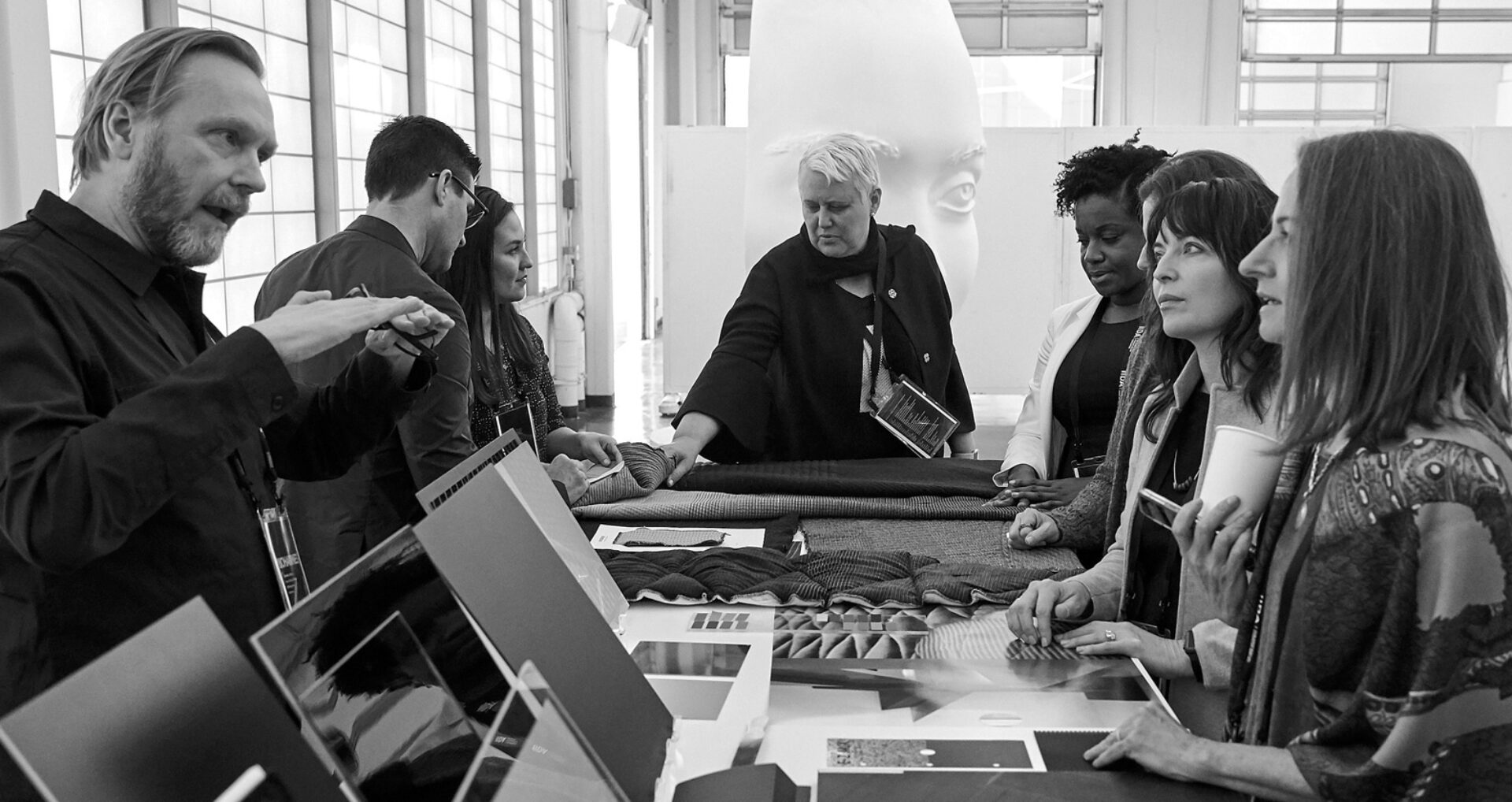The following is an excerpt from IIDA’s annual Industry Roundtable report, Industry Roundtable 23: The Future of Place, Experience, and Worklife. The roundtable took place at BMW Designworks in California. Read the full report here.
Further exploring the customer experience was a keynote panel of notable clients representing diverse sectors: Elizabeth Christopher, Netflix design manager; Kirt Martin, Landscape Forms chief executive officer; and Kyle Hamblin, Capital One vice president and senior director of the FinTech company’s workplace solutions team. The trio, all of whom have hands-on design and/or construction experience, embody today’s radically empowered and informed client. They shared their concerns in a “real talk” style that stripped away the usual designer/client power dynamic.
“Clients want an emphasis on placemaking in an increasingly optional work environment.”
James Kerrigan, IIDA, Jacobs
In sum, they want spaces that are socially conscious, inclusive, emotionally connected, supportive of innovation, and that demonstrate a measurable return on their investment. Clients want to see proof of concept and are asking designers to back up their proposals and ideas via data, case studies, and other evidence. “They want predictive analytics on the workplace,” explained Jill Stewart, Ind. IIDA. They have higher expectations—and tighter deadlines— than ever before.
At the same time, they are increasingly aware of the value of good design and good designers. In-house real estate/facilities executives and workplace strategists often rely on outside firms to help them advocate internally for innovative design. “Me trying to explain the value of design is not always successful, which is why we bring firms on board, and why our reliance on them is so huge,” says Hamblin. Clients view their design partners as facilitators and synthesizers who can reconcile the divergent viewpoints and conflicting “have-to-haves” of their many internal stakeholders.
There is also a broader awareness today that human capital, not real estate, is a company’s greatest asset and expense, and that the physical environment has much to do with attraction and retention. “Design is pennies compared to what people cost,” says Hamblin. “Even when we are looking into cost efficiencies, we don’t make tradeoffs that would affect employee retention.” Connecting certain design elements to their potential impact on recruiting is always a smart sell to stakeholders.
“Beauty is in convergence: when a design transforms business and culture at the same time."
Diana Farmer-Gonzalez, IIDA, Assoc. AIA, Gensler
The types of employees that companies are most interested in recruiting (and keeping engaged) continues to evolve. For instance, today’s talent war for younger Millennials and Gen Z staffers translates to a demand for spaces that reflect the value those demographics have regarding wellness, work/life balance, inclusivity, sustainability, and even adaptive reuse. Taking care of talent includes building a strong community and culture, as well as providing “emotional security, growth opportunity, progressive compensation, and creative spaces for collaboration,” says Susanna Covarrubias, IIDA, studio director and creative director at Gensler.
